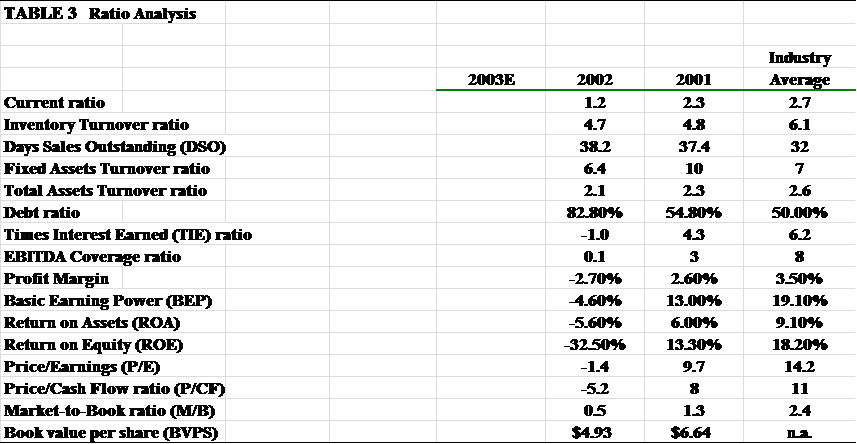Financial Management
Management Practice
Chapter 4 Financial Statement Analysis
Best Store Inc., a regional snack-foods producer, was in after an expansion program. Best Store had increased plant capacity and undertaken a major marketing campaign in an attempt to “go national.” Thus far, sales have not been up to the forecasted level, costs have been higher than were projected, and a large loss occurred in 2012 rather than the expected profit. As a result, its managers, directors, and investors are concerned about the firm’s survival.
Donna Jamison was brought in as assistant to Fred Campo, Best Store’s chairman, who had the task of getting the company back into a sound financial position. Best Store’s 2011 and 2012 balance sheets and income statements, together with projections for 2013, are given in tables 1 and 2. In addition, table 3 gives the company’s 2011 and 2012 financial ratios, together with industry average data. The 2013 projected financial statement data represent Jamison’s and Campo’s best guess for 2013 results, assuming that some new financing is arranged to get the company “over the hump.
Jamison examined monthly data for 2012 (not given in the case), and she detected an improving pattern during the year. Monthly sales were rising, costs were falling, and large losses in the early months had turned to a small profit by December. Thus, the annual data look somewhat worse than final monthly data. Also, it appears to be taking longer for the advertising program to get the message across, for the new sales offices to generate sales, and for the new manufacturing facilities to operate efficiently. In other words, the lags between spending money and deriving benefits were longer than Best Store’s managers had anticipated. For these reasons, Jamison and Campo see hope for the company-- provided it can survive in the short run.
Jamison must prepare an analysis of where the company is now, what it must do to regain its financial health, and what actions should be taken. Your assignment is to help her answer the following questions. Provide clear explanations, not yes or no answers.
PART A
Why are ratios useful? What are the five major categories of ratios?
PART B
Calculate Best Store’s 2013 current ratio based on the projected balance sheet and income statement data. What can you say about the company’s liquidity position in 2011, 2012, and as projected for 2013? We often think of ratios as being useful (1) to managers to help run the business, (2) to bankers for credit analysis, and (3) to stockholders for stock valuation. Would these different types of analysts have an equal interest in this liquidity ratio?



PART C
Calculate the 2013 inventory turnover, days sales outstanding (DSO), fixed assets turnover, and total assets turnover. How does Best Store’s utilization of assets stack up against other firms in its industry?
PART D
Calculate the 2013 debt, times-interest-earned, and EBITDA coverage ratios. How does Best Store compare with the industry with respect to financial leverage? What can you conclude from these ratios?
PART E
Calculate the 2013 profit margin, return on assets (ROA), and return on equity (ROE). What can you say about these ratios?
PART F
Use the extended Du Pont equation to provide a summary and overview of Best Store’s financial condition as projected for 2013. What are the firm’s major strengths and weaknesses?
PART G
What are some potential problems and limitations of financial ratio analysis?